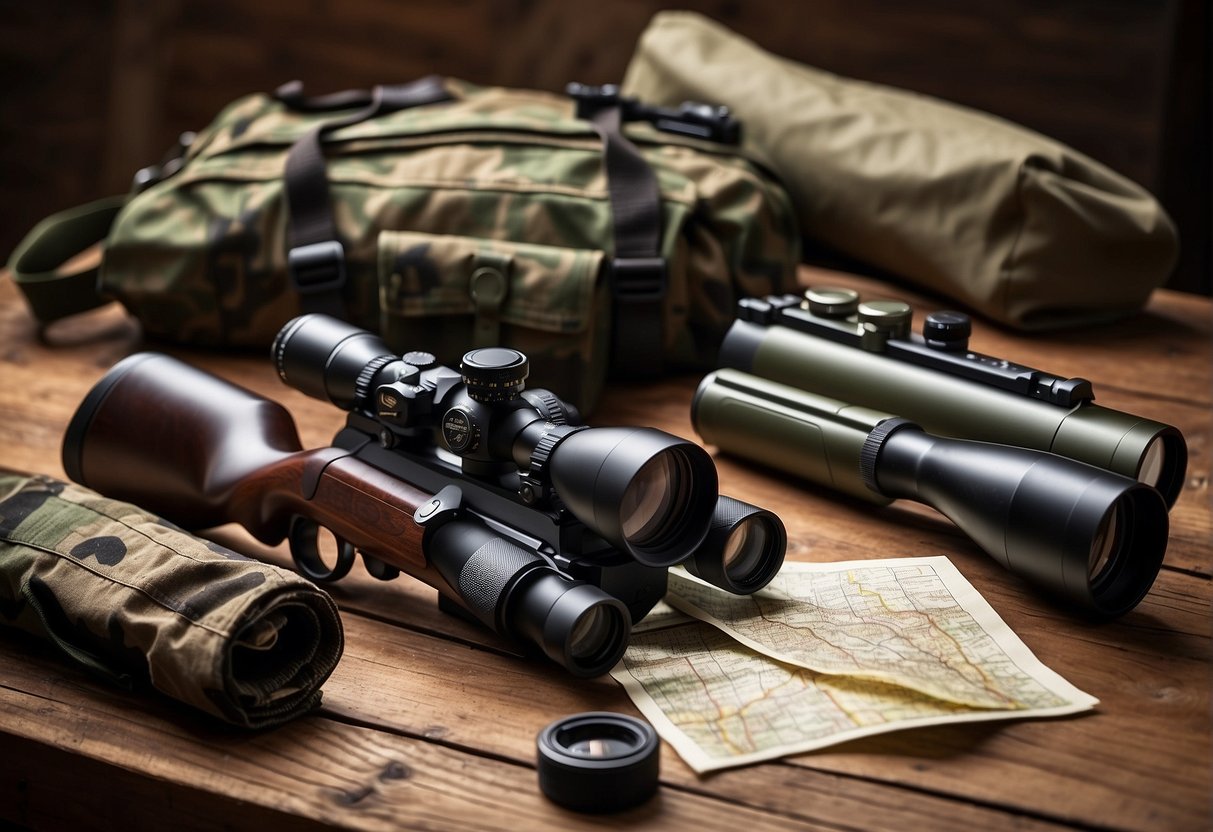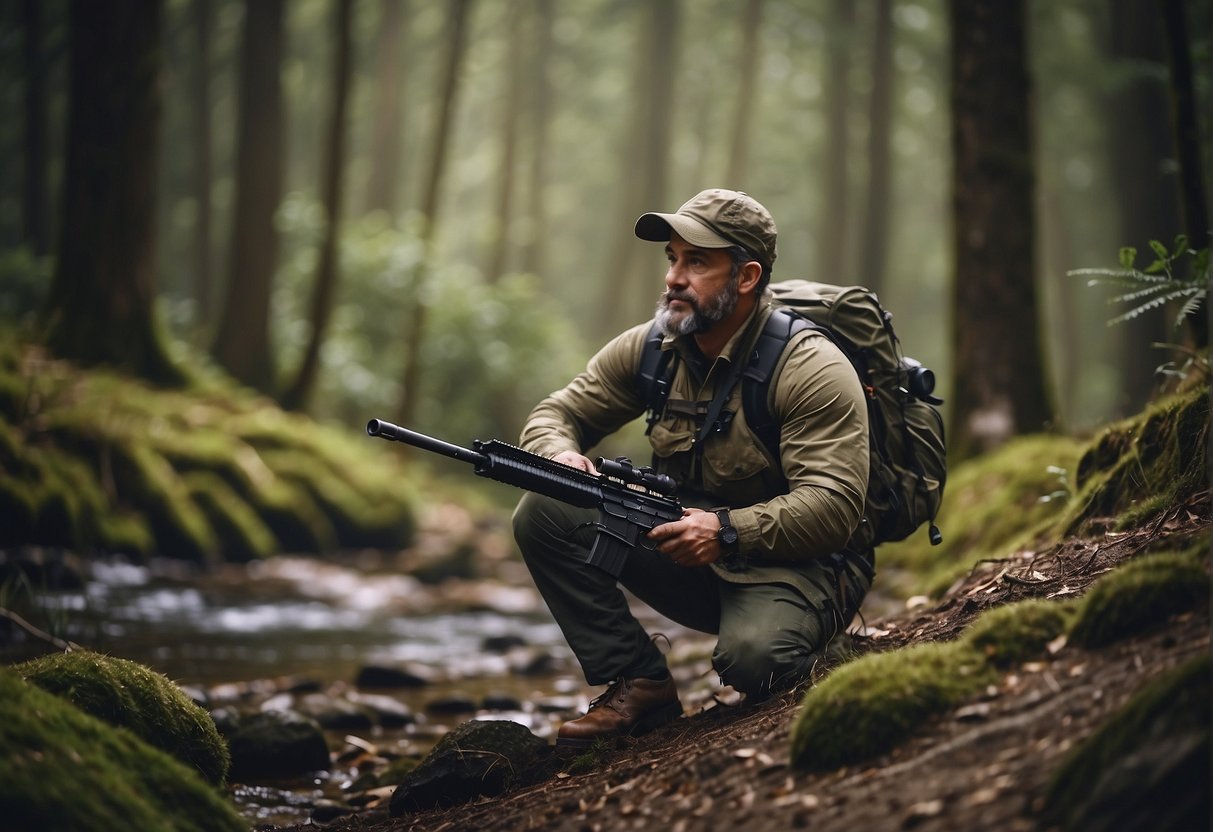Discovering the ideal hunting spots near you is an exciting step in planning your next outdoor adventure. Whether you’re a seasoned hunter or new to the sport, the hunt is not just about the harvest; it’s about immersing yourself in nature and experiencing the thrill of the chase. Your local terrain, from dense woodlands to open fields, may offer a variety of game species to pursue. Obtaining accurate information about where to hunt is crucial for a successful and legal excursion, ensuring you respect both the wildlife and the laws of the land.

Choosing where to hunt is about more than just finding a piece of land. It requires understanding the local wildlife, seasonality, and the regulations that govern hunting in your area. Tools like the U.S. Fish & Wildlife Service hunting map provide valuable information on locations and species, and apps like onX Hunt can pinpoint public hunting grounds. By being well-prepared with the right gear and knowledge, your hunting experience can be both enriching and rewarding.
Key Takeaways
- Finding hunting locations requires knowledge of local regulations and seasons.
- Preparation with the proper gear enhances the hunting experience.
- Utilizing resources can help identify public lands and hunting opportunities.
Understanding Hunting Regulations
Before heading out into the wild, ensure you’re up-to-date on hunting regulations. They are crucial not only for the conservation of wildlife but also for your safety and the ethics of the sport.
Federal and State Guidelines
The U.S. Fish & Wildlife Service is the federal body that oversees wildlife conservation and management. This agency establishes certain regulations affecting hunting on federal lands and migratory bird hunting throughout the United States. However, each state can set its own guidelines that complement federal regulations, often adding more specific restrictions according to local need. It’s your responsibility to know and follow both sets of regulations. For instance:
- Federal Regulations: Set baseline rules for all states.
- State Regulations: Can be more restrictive than federal rules.
Species-Specific Permits
When it comes to hunting specific species, further permits may be required. These are set to ensure sustainable hunting practices and are overseen by state agencies. For example:
- Deer Permits: Often issued through a lottery system due to high demand.
- Waterfowl Stamps: Required for hunting ducks and geese.
Remember that permits do come with their own set of rules, often dictating the hunting method, the season, and even the gear you can use. Be sure to obtain the correct permits and understand the regulations associated with them—your local wildlife agency websites are an excellent resource for this information.
Selecting the Right Hunting Location
When you’re planning a hunting trip, finding the right spot is crucial. You want a location that’s not only abundant in game but also legal and safe to hunt. The following tools and tips will guide you to the best hunting grounds, whether they’re public or private, and across various states.
Maps and Digital Tools
Maps are indispensable when scouting hunting locations. Utilize interactive maps to view satellite and topo maps of potential areas. Websites like the U.S. Fish & Wildlife Service offer detailed maps that pinpoint hunting places across the nation. For a more high-tech approach, the onX Hunt app provides hunters with comprehensive maps that include terrain, public hunting lands, and private properties. It’s a versatile tool for finding your ideal hunting spot in any state, be it Texas, Montana, or California.
- Useful Digital Tools:
- U.S. Fish & Wildlife Service’s interactive map
- onX Hunt App for detailed terrain and property boundaries
Private Lands Access
Gaining access to private lands can significantly expand your hunting grounds. In states like Florida and Arkansas, where public lands may be limited, establishing a relationship with landowners could be invaluable. Always approach landowners respectfully and ensure you have explicit permission. Some states may have programs or apps that assist with securing hunting rights on private properties. Remember to follow all local regulations regarding hunting on private lands.
Public Hunting Opportunities
The United States boasts a wealth of public hunting lands including state parks, wildlife management areas, and lands managed by federal entities. You’ll find excellent opportunities in states like Ohio, with its over 651,000 acres of public land, and vast federal lands in states like Nevada and Wyoming. Before you set out, check the regulations for each area as they can vary from one state park or wildlife management area to the next.
- States with Notable Public Hunting Lands:
- Ohio: Abundant acreage with an average of two acres per hunter
- Michigan and Oklahoma: Varied terrain in state parks and public areas
By utilizing the right maps and tools, understanding how to gain access to private lands, and being aware of the public hunting opportunities available to you, your next hunt can be both successful and lawful. Good luck and safe hunting!
Essential Gear for a Successful Hunt

Before heading out on your hunting adventure, it’s crucial to equip yourself with the right gear. The success of your hunt largely depends on the tools and navigation equipment you carry. Being prepared with the proper gear will help ensure a rewarding experience in the great outdoors.
Hunting Tools and Equipment
Your choice of hunting tools plays a pivotal role in your success. Consider the correct firearm or bow based on the game you’re hunting and the acres you’ll cover. If you’re after minerals, rocks, or crystals, don’t forget your rockhounding tools; a sturdy hammer and chisel are essential for extracting these treasures. A sharp knife is also indispensable, whether you’re field dressing game or prying out obsidian. Always include a first-aid kit to handle any minor injuries during your hunt.
- Firearms/Bow: Match your equipment to your quarry
- Rockhounding Tools: Hammer, chisel, and gloves for mineral hunters
- General Equipment:
- Knife: For cutting and dressing
- First-Aid Kit: For safety and emergency situations
Navigation and Tracking
Knowing your location and navigating the terrain is just as crucial as having the right hunting equipment. Use the onX Hunt app to access offline maps and trial information. Mark custom waypoints for regions with potential for hunting or rockhounding. Utilize the app’s feature to view private landowners, which can be beneficial when looking for new hunting grounds. This type of preparation will provide you with a reliable guide through unknown acres.
- onX Hunt App: For tracking and mapping
- Offline Maps: Never lose your way without cell service
- Custom Waypoints: Mark points of interest or successful spots
- Navigation Tools: Always carry a physical map and compass for backup
Hunting Types and Techniques

When preparing for a hunt, knowing the different types of game and the various hunting methods is crucial to a successful outing. You’ll need to adapt your approach accordingly, whether you’re pursuing large animals or smaller species, and there’s a distinct skillset required for bird hunting.
Big Game and Small Game Hunting
Big Game Hunting:
Big game typically includes animals such as deer and elk. Your hunting experience will largely depend on understanding the animal’s behavior and habitat. Stealth, tracking, and precision are paramount when targeting these larger species. Using appropriate calibers for rifles, along with bows equipped with broadhead arrows, is essential to ensure an ethical hunt.
- Preferred Methods: Spot and stalk, ground blinds, and tree stands.
- Key Techniques: Calling, scent masking, and trail camera scouting.
Small Game Hunting:
Small game includes species like rabbits and squirrels. It provides a more accessible hunting experience, perfect for honing your skills.
- Required Gear: Smaller-caliber firearms and shotguns.
- Season Tips: Look for signs of nibbling on vegetation or listen for movement through leaf litter.
Bird Hunting Varieties
Waterfowl Hunting:
Waterfowl, such as ducks and geese, requires you to master calling and decoy placement. Camouflage is critical, and you’ll often find yourself in blinds or boats to close the distance.
- Success Factors: Timing, understanding migration patterns, and weather conditions.
Turkey Hunting:
Turkeys are clever, making them a challenging bird to hunt. You’ll use a combination of calls and decoys to lure them into range. Patience and camouflage are key here.
- Turkey Tactics: Calling sequences, decoy positioning, and understanding roosting habits.
Upland Bird Hunting:
This category includes species like pheasants and quail. For upland bird hunting, working with a trained dog can greatly enhance your experience.
- Strategies: Walking up or flushing birds, staying quiet, and remaining vigilant.
Dove Hunting:
Doves require quick reflexes and sharp shooting. They are often hunted around grain fields or watering holes.
- Must-Dos: Pick a strategic spot and practice your aim, as doves are fast and can change direction abruptly.
Mastering these hunting types and techniques will make you a more versatile outdoorsman and improve your likelihood of success on your next hunt. Remember, each game type has its quirks and joys, and part of the hunting experience is learning and adapting to them all.


